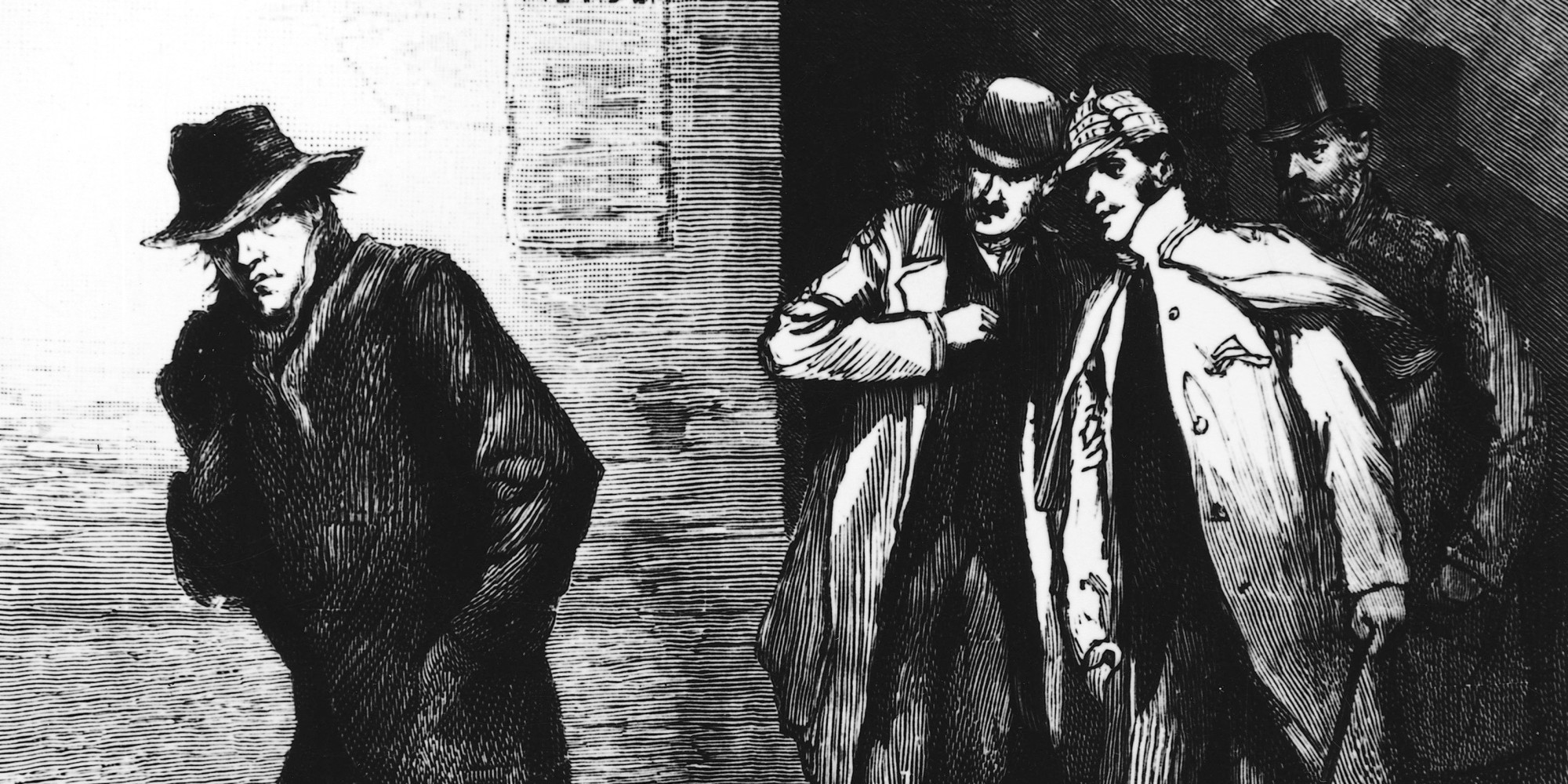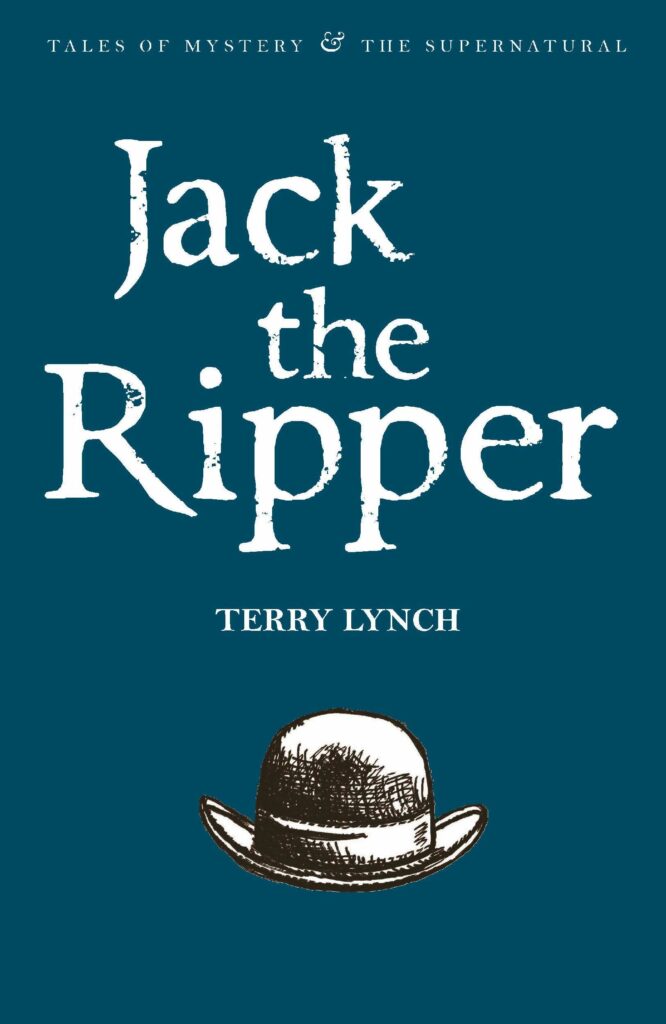
Jack the Ripper – The Killer and His Crimes
It was in November 1888 that the final grisly murder took place attributed to ‘The Whitechapel Murderer’, now commonly known as ‘Jack the Ripper’. In Part One of a two-part article, David Stuart Davies looks at the history behind this notorious killer.
‘I am down on whores and I shant quit ripping them till I get buckled – Jack the Ripper’
London, 1888. It was the autumn of terror when an unknown killer who became known as Jack the Ripper stalked the darkened streets and murdered a series of prostitutes in the Whitechapel area of the city. His crimes were brutal and apparently without motive. The fact that he was never captured or that his identity was never established for certain has brought this vicious killer international notoriety and dark legendary fame which has eclipsed the memory of his victims.
It began on 7 August when a cab driver found the first victim, 39-year-old Martha Tabram in George Yard Buildings situated between Whitechapel and Spitalfields. An autopsy revealed that the woman had been stabbed nearly forty times in her throat and abdomen. There is a debate amongst Ripperologists as to whether this murder was in fact the first of the Ripper murders, but the similarity between the savagery of the crime and the following five murders does suggest to many experts that it was the first of the fiend’s killing spree.
Indeed, the grisly murder of a second prostitute twenty-four days later bore striking similarities to the Tabram slaying. A laundry mark on her petticoats identified the woman as Mary Ann ‘Polly’ Nichols. Then In the early hours of 8 September, a market worker discovered the body of another woman in Hanbury Street, Spitalfields. Her body had been eviscerated, a portion of her uterus had been excised, while her intestines had been draped over her shoulders and her legs splayed wide to degrade her even in death. Like the first two victims, Annie Chapman worked as a prostitute.
At the inquest witness, Elizabeth Long testified that she had seen Chapman speaking to a man near the crime scene whom she described as being around forty with dark hair and a foreign ‘shabby genteel’ appearance.
For a while, all was quiet on the streets of Whitechapel and residents began to relax then on 30 September there were two more horrendous murders. The first victim was 44-year-old prostitute Elizabeth Stride. The killer was disturbed in his gruesome task and fled but, within an hour, the body of a second woman was discovered. She was later identified as Catherine Eddowes. Her corpse had been severely mutilated: The left kidney and part of the womb were missing; and the Ripper had sliced off the tip of her nose and eyelids and carved triangular incisions into her cheeks.
That same night a constable on patrol in the area discovered a cryptic message scrawled on a wall: ‘The Juwes are the men that will be blamed for nothing.’ Police Superintendent Thomas Arnold, fearing that the graffiti would spark anti-Semitic rioting, ordered that the message be washed away.
The high level of attention that the killings received in the press led to a number of hoax letters being sent to the newspapers and the police. However, one, in particular, was taken seriously by the authorities. It was sent on 27 September and written in red ink. Claiming to come from the killer, the writer promised to ‘clip the ladys ears off’ his next victim. The autopsy of Catherine Eddowes revealed a mutilated earlobe.
The letter was signed off with the first use of the grisly soubriquet Jack the Ripper, a term that soon fell into common parlance. The police distributed copies of the letter among the public hoping that someone would recognise the handwriting.
The Ripper’s final victim was Irish street woman Mary Kelly. This murder was particularly notable for two reasons: Kelly was murdered indoors rather than on the street and the mutilation of her body was unprecedented. The victim’s skin had been stripped from her legs, her breasts and internal organs had been removed, including her heart and arranged around the corpse, while her face had been made unrecognisable by the number of gashes it had received. After Mary Kelly’s death, the murders stopped. It was as though, with this last desecration, the fiend had satiated himself.
The swiftness of the attacks, and the manner of the mutilations, led to speculation that the murderer had the skills of a physician or butcher. However, others disagreed and thought the wounds too crude to have been carried out by a professional. The alibis of local butchers and slaughterers were investigated, with the result that they were eliminated from the enquiry. Over 2,000 people were interviewed, ‘upwards of 300’ people were investigated, and 80 people were detained but no one was ever charged with the crimes.
Over the years there have been many theories as to the identity of the Ripper. For a time even one of Queen Victoria’s grandsons, Prince Albert Victor, Duke of Clarence was suspected of the murders, working in tandem with his physician Sir William Gull – but no real proof could be established, as was the case with the many other individuals in the frame. One thing is for certain: no matter how unlikely the names of those on the ever-expanding lists of suspects might be, the ongoing challenge of identifying Jack the Ripper has helped to keep this series of crimes at the forefront of criminal and social history for over 125 years.
And the search for the Ripper’s true identity carries on today. As recently as 2011, a British detective, Trevor Marriott, who has long been investigating the Jack the Ripper murders was denied access to uncensored documents surrounding the case by the Metropolitan Police because it was stated, they contained protected information. In 2014, Russell Edwards, an author and amateur sleuth claimed that he had proven the identity of the Ripper by DNA results obtained from a shawl belonging to one of the victims, Catherine Eddowes. The reports have yet to be verified, but Edward asserts that they point to Aaron Kosminkski, a Polish immigrant and one of the prime suspects in the case.
Such is the fascination with this shadowy unknown creature that has become the central character in a whole series of films, novels, and TV dramas, all designed to thrill, entertain and frighten audiences. I shall be examining this aspect of the character in part two: Jack the Ripper: the Media Star.
Books associated with this article
